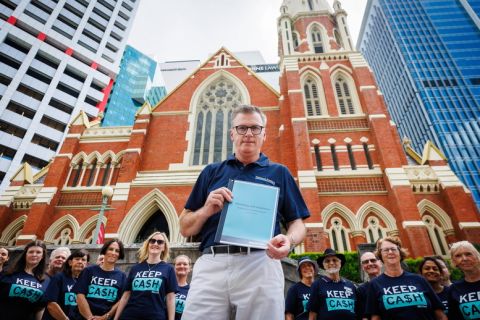Fit and fabulous? Be prepared for a fall
Make sure your fitness activities are safe and that you know what to do to prevent and recover from falls and other injuries.

Many Australians are actively defying the stereotype of ageing quietly.
No longer happy to while away their lives in a lounge chair, some of us are taking to the gym or community exercise classes, determined to do our best to stay healthy, mobile, and independent.
Encouraged by the arrival of e-bikes, some are embracing cycling as a way of keeping in shape.
But with all this extra exercise, comes a greater risk of injury for older people.
British billionaire, Richard Branson, came a cropper while cycling in the British Virgin Islands. Not to miss a promotional opportunity, the 73-year-old businessman posted a photograph on his Instagram account of the bloody aftermath.
“Took quite a big tumble while cycling in Virgin Gorda a little while ago,” he told his followers. “I hit a pothole and crashed hard, resulting in another haematoma on my hip and a nasty cut elbow, but amazingly nothing broken.”
He was fortunate in being able to walk away from the accident, perhaps in part due to his long-time commitment to keeping fit.
Falls are Australia’s leading cause of injury, hospitalisation, and death, representing 43% of injury hospitalisations and 42% of injury deaths. Older people are most at risk, and older women more so.
People aged 65-plus make up 77% of all injury hospitalisations and 71% of injury deaths due to falls. They are eight times as likely to be hospitalised and 68 times as likely to die from a fall than those aged 15–64.
Almost two-thirds (63%) of hospitalisations due to falls were for females, and females have a higher age-standardised rate of falls injury hospitalisation than males.
Over half (53%) of falls deaths were for females, however males had a higher age-standardised rate of deaths due to falls.
You don’t have to go mountain climbing or sky diving to sustain a falls injury.
Most falls requiring hospitalisation occur in the home, and more than half of those happened on a single-level surface (for example, by slipping or due to a collision). Meanwhile, 7% of falls leading to hospitalisation involve stairs or steps, with other causes involving activity around furniture and ladders.
It’s the buzz word in sports physio, gym, and exercise circles as the best way to arrest the physical decline that comes with ageing. Progressive loading is defined as the gradual increase of resistance during an exercise which improves strength and muscle development over time.
The body adapts to the loads placed on it. If you do it progressively and carefully, your body will adapt to bear more load.
Sports experts say resistance strength training can be used to reverse muscle loss or at least maintain muscle, and maintain or improve bone density, if it comes with a healthy diet with enough protein and calcium.
Of course, we are all different, and you should consult your doctor and other experts before starting any exercise regime. Progressive loading might help with these ailments:
Hips: Common causes are osteoarthritis and fractures due to falls. Post-menopausal women are at greater risk of fractures because of declining bone density. Treatment for hip fractures will be medical at first, followed by rehab focused on building strength and mobility.
Neck: Gentle yoga and Pilates-style mobility exercises that target your thoracic mobility can help.
Lower back: Don’t lean over to lift something, use the legs and glutes to take the strain off the back. Recovery can be helped by strengthening the core muscles with basic exercises such as planks, side planks, and glute bridges.
Knees: Knee pain usually manifests as arthritis in older age and, while there is no cure, there are recovery measures that can help. For more information, follow this link.
Related reading: AIHW, UK Telegraph





